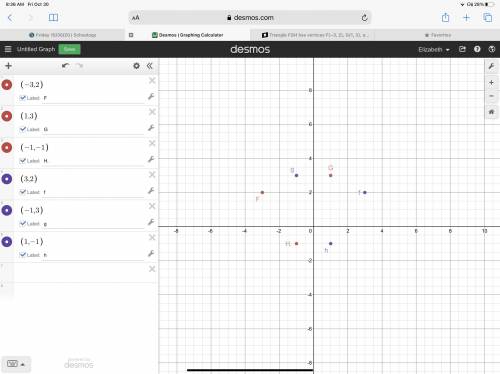
Mathematics, 30.10.2020 15:40 culturedxnat
Triangle FGH has vertices F(−3, 2), G(1, 3), and H(−1, −1). Triangle F′G′H′ has vertices F′(3, 2), G′(−1, 3), and H′(1, −1).
Which transformation of triangle FGH produced triangle F′G′H′?
a rotation of 90° counterclockwise around the origin
a reflection across the x-axis
a rotation of 90° clockwise around the origin
a reflection across the y-axis

Answers: 1


Other questions on the subject: Mathematics

Mathematics, 21.06.2019 15:30, lizzyhearts
Angel entered a triathlon (a three-part race). he swam 1 mile, rode his bike 30 miles, and ran 10 miles. how far did he go altogether? a. 11 miles b. 123 miles c. 41 miles d. 40 miles
Answers: 1

Mathematics, 21.06.2019 19:00, lex112592
Samantha is growing a garden in her back yard. she spend $90 setting up the garden bed and buying the proper garden supplies. in addition, each seed she plants cost $0.25. a. write the function f(x) that represents samantha's total cost on her garden. b. explain what x represents. c. explain what f(x) represents. d. if samantha plants 55 seeds, how much did she spend in total?
Answers: 2

Mathematics, 21.06.2019 20:20, deonnaturner68p7hz7y
The surface area of the triangular prism is .
Answers: 1

Mathematics, 21.06.2019 20:30, shadowselena63
What’s 8y+48 and factor each expression completely
Answers: 2
You know the right answer?
Triangle FGH has vertices F(−3, 2), G(1, 3), and H(−1, −1). Triangle F′G′H′ has vertices F′(3, 2), G...
Questions in other subjects:





Chemistry, 31.07.2020 01:01

Biology, 31.07.2020 01:01







